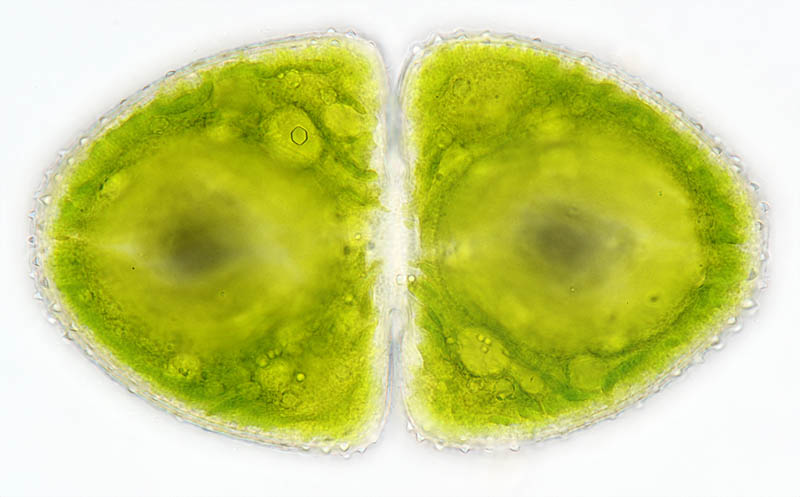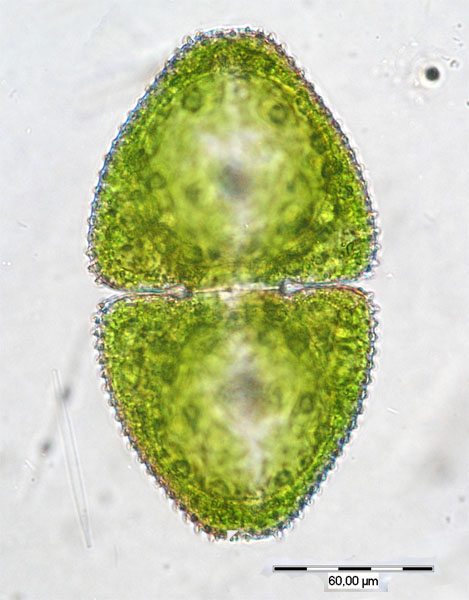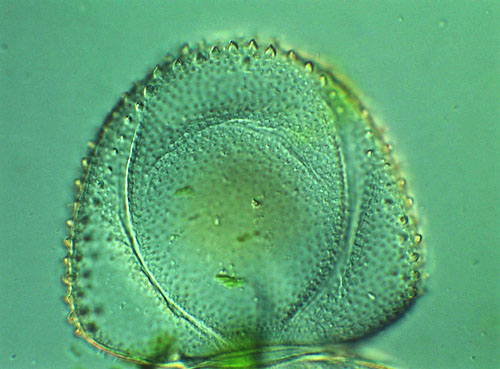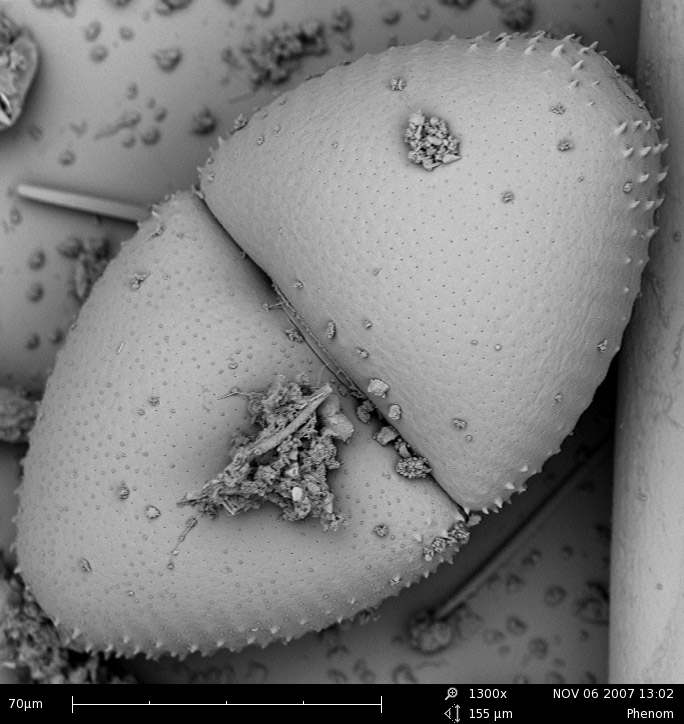
Images (5) © Wim van Egmond ( multifocus mouse over © Alfred van Geest)
| Optical section of a cell of C. ovale showing parietal chloroplast plates with many pyrenoids. Notice accumulation of crystals in the interior (the vacuole) of the semicells. |
Empty semicell of C. ovale showing coarse cell wall pores in the centre and conical granules near the margin.
|
|
SEM image of Cosmarium ovale. |


